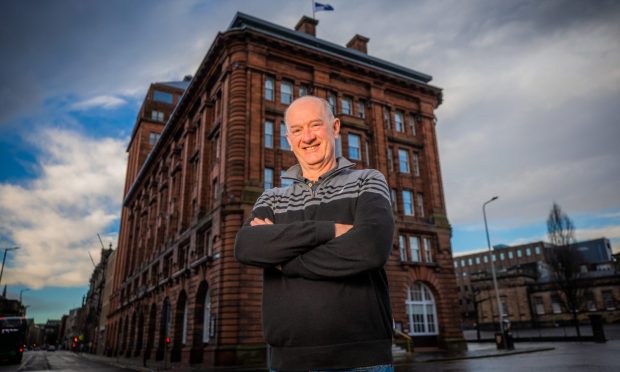Plucky, proud Scotland. Maybe we’re not all so sick of it after all.
A week before Scotland had Wales by the throat and failed to tighten the grip and win. On Saturday they had England – outrageously and in historically unprecedented fashion – by the throat in the dying minutes of the greatest Calcutta Cup game ever played.
And ultimately, they failed to win again. But this time, it feels utterly different.
Avoiding defeat and retaining the cup for the first time since 1984 by virtue of the 38-38 draw makes part of the difference, but it not all of it. The greatest comeback in the history of international rugby union was the difference.
Twickenham has long been a desert for Scotland and it looked as barren as ever at half-time in Saturday’s contest. Only it wasn’t a contest, really; Scotland were being demolished as England played with elan and precision, apparently set on “revenge” for their defeat at Murrayfield 12 months ago and Scotland’s supposed “over-celebration”.
None of us guessed the potential irony in Jonny May making an over-celebratory gesture as he touched down for England’s fourth try to put them 31-0 ahead after 28 minutes.
Scotland were staring into an abyss, and not just because England had scored the most points in a first half over 150 years of Calcutta Cup history. The impending records collapsing to the rampant English were only a small part of it.
The deeper abyss was that Scotland’s remaining, fragile confidence from a toiling 6 Nations campaign marred by injury and a fair degree of poor play was being utterly obliterated. There was every danger this team could be irreparably damaged for the long term.
But then England made their first obvious mistake of the half. Owen Farrell lingered a little too long over a kick in midfield – what he was doing kicking when England were pouring through at will on the run will forever be a puzzle – Scotland captain Stuart McInally charged down and did his “Forrest Gump” style sprint for 60 metres, running away from Farrell and stepping out of May’s tackle to score.
It seemed like an isolated finger in a dyke full of leaks at the time. England resumed dominance quickly, but they made a series of other errors to miss chances to further keep the scoreboard moving before half-time.
In a stunned dressing room at the break, Scotland were talking mostly about “winning the second half” and regaining some small measure of self-respect. Whether any of them truly believed that possible, a trickle of self-doubt had leaked in England, and it soon became an incredible flood.
24 more unanswered points followed for Scotland in the most incredible 13 minutes of play early in the second half. That wasn’t quite unprecedented – some of us recall Paris 1999 when the Scots scored five tries in 15 minutes – but to do it from such an apparently hopeless position certainly was.
The key technical change was actually defensive – England had been moving the ball from first receiver so swiftly that Scottish defenders were continually being punished for rushing up on Farrell. However the adjustment to focus on the ball put the England stand-off under pressure and he became half the player almost instantaneously.
Whether opposite number Finn Russell, who talked of “an argument” with Gregor Townsend at half-time about tactics, changed the game plan against orders or not, there’s no question the stand-off took the game by the scruff of the neck, as we’ve been longing for him to do for some time.
His brilliant “no look” pass to spring Sam Johnson through the English defence for the sixth, go-ahead try was a more subtle but no less audacious bit of brilliance to go with The Pass to Huw Jones in last year’s Calcutta Cup game.
Russell added two more delicious deliveries for Darcy Graham’s two scores, and of course intercepted Farrell for his own. It was a virtuoso 40 minutes, particularly off the back of a fairly hapless first 40, but that’s pretty much Finn.
But that second 40, by Russell and by the rest of this team – several players visibly came of age, including Graham, Johnson, Magnus Bradbury, Ben Toolis – has utterly changed Scotland’s post-championship mood. From desperation, there is suddenly now a new momentum for the summer’s preparation and the World Cup in Japan beyond.
Even with the injuries, even with the overwhelming odds of the still-continuing search for a win at Twickenham, even on the verge of complete abject humiliation, there is a way back now.
Of course they’re not entirely bombproof because of this – losing the victory in the final seconds showed that. And it won’t always happen in such spectacular fashion as this comeback for the ages.
But depleted Scotland, with 19 players injured – nine of them probable first choice starters – over the championship season, proved on Saturday they need fear nothing.
Sometimes you have to stare into the abyss to see that anything is possible.


